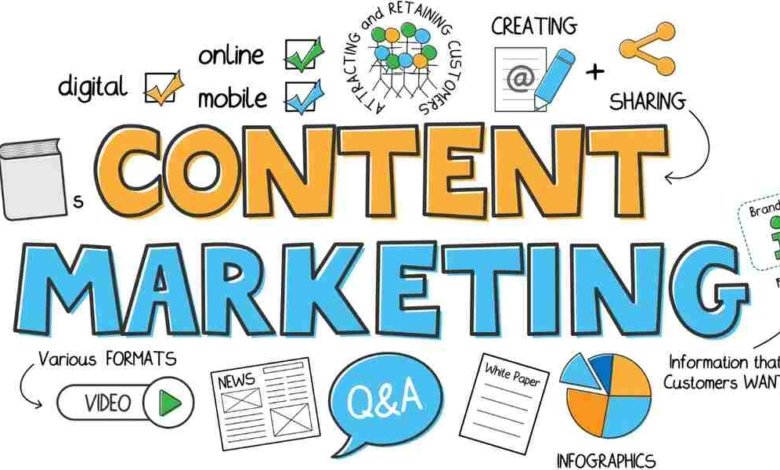Content Marketing: An Ultimate Guide for Beginners

Content Marketing, in the digital age, content marketing has emerged as a powerful tool for businesses to connect with their audience, build brand loyalty, and drive sales. However, simply creating content is not enough. To stand out in a crowded market, you need a well-defined content marketing strategy that not only engages your target audience but also delivers measurable results. This article explores the fundamentals of content marketing and shares actionable insights to help you craft an effective strategy.
What is Content Marketing?
Content marketing involves creating and distributing valuable, relevant, and consistent content to attract and retain a clearly defined audience. This strategic approach aims to drive profitable customer action, whether it’s making a purchase, subscribing to a newsletter, or engaging with your brand on social media.
The core objective of content marketing is to educate and inform your audience, rather than overtly promoting your products or services. By doing so, businesses can position themselves as industry experts, fostering trust and building lasting relationships with their customers.
Follow Us: Snap Bloom
Developing a Content Marketing Strategy
A successful content marketing strategy starts with understanding your audience’s needs and preferences. Here are some key steps to help you create an impactful plan:
Define Your Goals:
Build to the point, clear and measurable goals that align with our whole business goals and objectives. These could include increasing brand awareness, generating leads, or driving more website traffic.
Know Your Audience:
Create detailed buyer personas to understand your audience’s pain points, interests, and behaviors. This will help you tailor your content to meet their specific needs.
Conduct Keyword Research:
Figure out the right keywords to that target specify audience as per your content. Incorporate primary keywords like “content marketing” and LSI (Latent Semantic Indexing) keywords such as “content marketing strategy,” “digital content creation,” and “SEO content marketing” to improve your search engine visibility.
Create a Content Calendar:
Firstly, plan that what will be your content including all topics, formats, and date of publications in advance. This will help you maintain consistency and ensure you cover a diverse range of topics.
Choose the Right Content Distribution Channels:
Determine where your audience is most active. This could include social media platforms, email newsletters, or even paid channels like Google Ads.
Types of Content (Should include in your Strategy)
Diversifying your content types is crucial to engaging different segments of your audience. Here are some popular formats to consider:
- Blog Posts: Blog posts are excellent for sharing in-depth information and establishing your expertise in a particular niche. Ensure your posts are optimized for SEO by including relevant keywords and providing value to your readers.
- Infographics: Visual content like infographics can simplify complex topics and make your content more shareable across social media channels.
- Videos: Video content is highly engaging and has a higher chance of being shared. Consider creating tutorials, product demonstrations, or behind-the-scenes content to keep your audience interested.
- eBooks and Whitepapers: Long-form content like eBooks and whitepapers are ideal for capturing leads. Offer these in exchange for contact information to build your email list.
- Case Studies: Showcase your success stories and provide evidence of how your product or service has helped other customers.
Importance of SEO in Content Marketing
SEO content marketing is all about creating content that satisfies both user intent and search engine requirements. This involves optimizing your content for keywords, ensuring it is structured properly, and making it easy for search engines to understand.
Some SEO best practices include:
- Incorporate Keywords Naturally: Use primary and LSI keywords throughout your content without overstuffing.
- Optimize Meta Tags: Write compelling meta titles and descriptions that include your main keywords to improve your click-through rate.
- Use Internal and External Links: Internal links help search engines understand the structure of your website, while external links can increase your credibility by associating your content with authoritative sources.
Content Distribution Channels
Identify the best content distribution channels for your brand, such as:
- Social Media: Platforms like Facebook, LinkedIn, and Instagram are ideal for sharing content and engaging with your audience.
- Email Marketing: Regular newsletters can help nurture your leads and keep your subscribers informed about new content and updates.
- Guest Blogging: Writing for other reputable sites can expand your reach and establish your authority in your industry.
- Paid Advertising: Platforms like Google Ads and social media ads can help amplify your content to reach a broader audience.
Engaging Content Ideas for Your Audience
Creating engaging content ideas can be challenging, but brainstorming with your team or leveraging tools like Google Trends can spark inspiration. Some ideas to consider include:
- How-to Guides: Provide step-by-step instructions to solve a specific problem.
- Industry News: Share the latest trends and developments in your field.
- User-Generated Content: Encourage your audience to create content, such as reviews or testimonials, to build community and trust.
- Q&A Sessions: Answer frequently asked questions in your industry to position yourself as an expert.
Conclusion
Crafting a robust content marketing strategy involves more than just producing content; it’s about creating value, optimizing for SEO, and leveraging the right content distribution channels. By incorporating these strategies and continuously refining your approach, you can build a loyal audience and drive long-term business growth.
Must Visit: Snap Bloom




